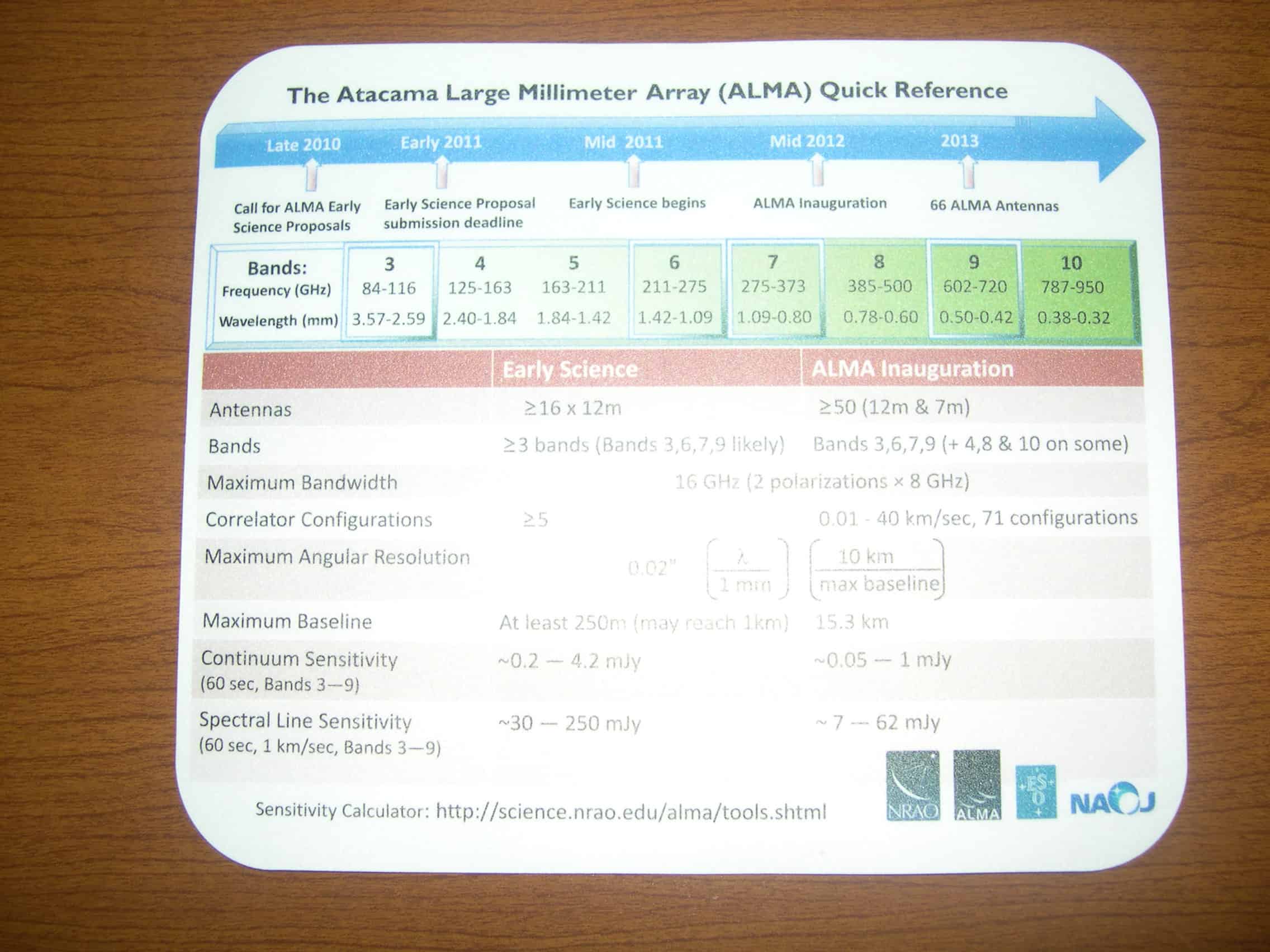
Does what it says on the mouse mat
By Michael Banks in Miami, Florida
I was wondering how long it would be before I heard Will Smith’s 1998 hit song “Miami”, but I didn’t expect it while walking into a session at the 216th American Astronomical Society meeting.
This evening I attended a special symposium on the status of the Atacama Large Millimeter/submilliter Array (ALMA, which is currently being constructed in the Atacama desert in Chile.
Built by the European Southern Observatory and the US National Radio Astronomy Observatory (NRAO), when fully complete in 2013, ALMA will contain 66 antennas in total and be 100 times more sensitive than other millimetre telescopes.
ALMA will allow astronomers to study a range of phenomena including planetary and star formation.
There are currently four antennas up and working, with another 12 planned before ALMA begins science operations, which is expected to happen in early 2011.
Al Wootten, from the NRAO, who has been involved with planning ALMA for the last 20 years, says that the sensitivity together with the large bandwidth will make it a unique facility.
Speakers at the symposium were encouraging astronomers to submit ideas for using time on the telescope. “What ALMA will excel at is exploring the unexpected,” says astronomer Kelsey Johnson from the University of Virginia.
Oh, and if you are an engineer or scientist really interested in working at the ALMA telescope then they are currently recruiting and apparently want to hear from you.



